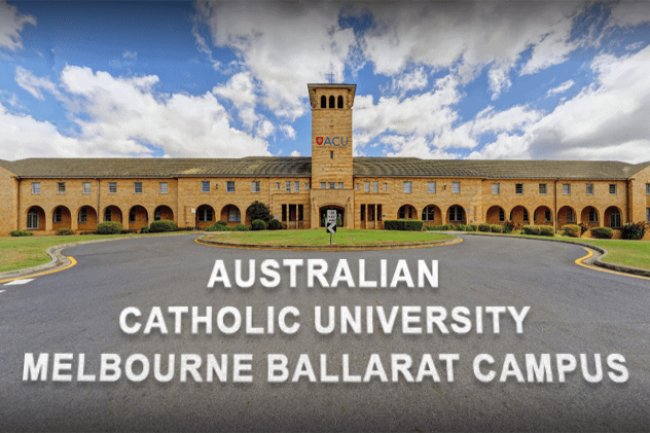Difference Between College And University In The USA
United States, the terms "college" and "university" are often used interchangeably, but they can have different meanings depending on the context.
In the United States, the terms "college" and "university" are frequently used interchangeably, causing misunderstanding among students, parents, and even professors. However, academic offerings, degrees, sizes, and other factors differ significantly between the two. We will delve into the distinctions between colleges and universities in the United States in this blog, allowing you to make informed decisions regarding your educational route.
1. Introduction
Before we get into the differences between colleges and universities, it's important to grasp the complexities of higher education in the United States. The higher education system in the United States is made up of numerous sorts of institutions, each fulfilling unique educational requirements and aims. The key categories are as follows:
1. Community Colleges
Characteristics:
- Community colleges provide two-year programs such as associate degrees and certificate programs, and they frequently act as low-cost stepping stones for students planning to transfer to four-year institutions or universities.
- Community colleges serve a broad student population that includes recent high school graduates, working adults, and people looking for specific skills or a career change.
Purpose:
- Make higher education more accessible and affordable.
- Prepare students for the workforce or make transfers to four-year colleges easier.
2. Colleges
Characteristics:
- Colleges primarily focus on undergraduate education, but some may offer limited graduate programs; they promote teaching and give bachelor's degrees in a variety of subjects; and they emphasize research.
- Colleges typically feature lower class sizes, allowing for more customized interactions between instructors and students.
Purpose:
- Prioritize undergraduate education and teaching;
- Provide a solid foundation for students pursuing entry-level careers or postgraduate degrees.
3. Universities
Characteristics:
- Universities are larger and more diverse institutions that provide a wide range of undergraduate, graduate, and professional programs.
- They place an emphasis on research alongside teaching and frequently award advanced degrees such as master's and doctoral degrees.
Purpose:
- Provide comprehensive educational opportunities in a variety of fields; and
- Support advanced research, scholarship, and specialized professional training.
Now that we've gained a wider understanding of the US higher education system, let's go further into the unique qualities of colleges and universities.
Colleges In The USA
Characteristics of Colleges
Colleges in the United States share several key characteristics that set them apart from universities:
1. Types of Degrees Offered
Colleges are primarily concerned with undergraduate education and often provide:
- Associate Degrees: Two-year programs that can be used as a stand-alone qualification or as a stepping stone to further study.
- Bachelor's Degrees: Bachelor's degrees are awarded by colleges and normally take four years to complete.
2. Focus on Undergraduate Education
Colleges place a premium on undergraduate teaching and learning. Professors and instructors are typically more involved with undergraduate students, encouraging close contacts and chances for mentorship.
3. Smaller Class Sizes
Colleges frequently have smaller class sizes than universities. This allows professors and students to receive more individualized attention and interaction.
4. Emphasis on Teaching
Colleges' principal aim is to educate students. While research is not entirely absent, it often takes a back seat to faculty members' instructional obligations.
5. Less Research Activity
While some colleges perform research, it is usually less substantial than at universities. College research efforts typically center on undergraduate involvement in projects.
Examples of Colleges
Among the notable colleges in the United States are Amherst College, Williams College, and Swarthmore College. These universities are well-known for their dedication to undergraduate education and robust liberal arts programs.
Universities In The USA
Characteristics of Universities
Universities in the United States are well-known for their extensive offerings and a wide range of degree levels:
1. Wide Range of Degree Levels
Universities provide a wide range of academic programs, including:
- Bachelor's Degrees: Universities, like colleges, award undergraduate degrees.
- Master's Degrees: Many colleges offer master's programs in a variety of fields.
- Doctoral Degrees: Universities are the principal suppliers of doctoral programs such as Ph.D. and professional degrees (for example, M.D. or J.D.).
- Professional Programs: Universities frequently house professional schools or colleges such as law, medicine, business, and engineering.
2. Comprehensive Research Institutions
Universities place a high value on research in a variety of fields. Faculty members regularly participate in research, and universities frequently have considerable research facilities and resources.
3. Graduate and Professional Programs
Universities provide a wide range of graduate and professional programs in addition to undergraduate education. These programs are designed for students pursuing higher degrees and specialized training.
4. Extensive Faculty Research
University faculty members are heavily interested in research and scholarship. This research not only adds to academic knowledge, but it also has real-world applications and consequences.
University Example:
Harvard University, Stanford University, and the University of California, Berkeley are among the most prestigious universities in the United States. These universities are well-known for their diversified academic offerings, considerable research activity, and international acclaim.
Comparison Between Colleges and Universities
Let us compare several features of colleges and universities to acquire a better grasp of their distinctions:
1. Degrees Offered
Colleges: These institutions primarily provide associate and bachelor's degrees.
Universities: Provide a greater range of degrees, such as bachelor's, master's, doctorate, and professional degrees.
2. Academic Focus
Colleges: Prioritize undergraduate education and teaching first.
Universities: Integrate undergraduate instruction with comprehensive research and graduate programs.
3. Class Sizes
Colleges: Smaller class sizes allow for more customized contact with teachers.
Universities: Class sizes may be greater, especially in lower-level undergraduate courses.
4. Research Opportunities
Colleges: Conduct research, but it is often limited and frequently includes undergraduate students.
Universities: Place an emphasis on research in a variety of subjects, with faculty actively engaging in advanced research projects.
5. Funding and Resources
Colleges: Typically, college resources are more limited, particularly for research pursuits.
Universities: Universities have significant funding and resources to support vast research activities and modern facilities.
6. Career Prospects
Colleges: Prepare students for entry-level positions while also providing a solid foundation for higher education.
Universities: Provide a larger range of graduate degrees and research possibilities that can lead to specialized career paths and positions of leadership.
Choosing Between College and University
When determining whether to attend a college or a university in the United States, various things must be considered:
Factors to Consider
- Individual Aspirations and Goals: Determine your academic and career goals, as well as your ideal learning environment.
- Program Offerings: Look into individual colleges to see if they provide programs that match your interests and career goals.
- Location and Size: Consider the institution's location as well as if you prefer a smaller, more intimate campus (typical of many colleges) or a larger, more diverse campus (typical of universities).
- Financial Factors: Consider tuition costs, potential scholarships, and your personal financial condition.
- Research Interests: If you want to do research or seek advanced degrees, a university with strong research opportunities might be a better fit.
.
2. Colleges in the USA
Colleges in the United States include a wide range of institutions, each with its own mission, focus, and approach to higher education. While colleges differ in size, program offerings, and mission, they share certain essential qualities that distinguish them from universities. Let us go into these differentiating characteristics to acquire a better knowledge of what characterizes a college in the higher education scene of the United States:
1. Types of Degrees Offered
Colleges prioritize undergraduate education as the foundation of their academic programs. Colleges often provide the following categories of degrees:
Associate Degrees
Duration: Associate degree programs are typically two years long.
Purpose: They can be used as stand-alone qualifications, allowing graduates to enter the workforce right away, or as a stepping stone to higher education.
Curriculum: Associate degree programs frequently provide a foundational education in a variety of subjects, preparing students for certain jobs or additional academic pursuits.
Bachelor's Degrees
Length: The most common bachelor's degree programs provided by institutions typically last four years.
Focus: College bachelor's degrees span a wide range of areas, including liberal arts, sciences, social sciences, and professional fields.
Academic Excellence: Colleges strive to establish a solid foundation in undergraduate education so that graduates are well-prepared for a variety of career options.
2. Focus on Undergraduate Education
Colleges are distinguished by their unrelenting dedication to undergraduate teaching and learning. While research and academic pursuits are important, schools' principal aim is to provide high-quality undergraduate education. This focus's key features include:
Personalized Attention
Class Sizes: Colleges often have smaller class sizes than universities. This deliberate choice enables more intimate and participatory learning situations.
Faculty Involvement: College professors and instructors are usually more interested with undergraduate students. This allows for more personal encounters, mentorship possibilities, and individualized coaching.
Teaching Excellence
Instructional Excellence: The heart and soul of institutions is teaching. Faculty members are committed educators who put their jobs as instructors and mentors first.
Curriculum Development: College curriculum are meant to provide a well-rounded education that encourages critical thinking, communication skills, and a thorough understanding of the chosen area.
3. Emphasis on Teaching
As the principal mission of their faculty, colleges place a strong focus on teaching. While research is not wholly absent from college campuses, it often takes a back seat to faculty members' instructional obligations. The following are key features of this concentration on teaching:
Classroom Focus
Teaching Load: College faculty members frequently have a higher teaching load than their counterparts at research-focused universities.
Student Interaction: The emphasis on teaching allows teachers to interact with students more closely, giving vital guidance and assistance.
Teaching Innovations
Pedagogical Innovation: Colleges encourage teachers to experiment with new teaching methods and strategies in order to improve undergraduate students' learning experiences.
Assessment: Student learning assessment is a critical component of college education, ensuring that students achieve the specified learning goals.
4. Less Extensive Research Activity
While colleges perform research, the activities are often less comprehensive and intensive than those conducted at universities. College research efforts can have distinct qualities:
Undergraduate Research Opportunities
- Emphasis on Involvement: Colleges usually emphasize the need of involving undergraduate students in research projects.
- Practical Experience: College research programs give students with vital hands-on experience that contributes to their academic and professional development.
Faculty Research Alignment
Undergraduate Focus: Faculty research at colleges is frequently aligned with undergraduate teaching and learning goals, with an emphasis on projects that directly benefit students.
Community Engagement: Some institutions encourage research with a community or regional focus in order to contribute to local development and address pertinent challenges.
5. Examples of Colleges
There are numerous universities around the United States, each with its own distinct personality and set of capabilities. Here are a few noteworthy colleges known for their emphasis on undergraduate education and outstanding liberal arts programs:
Amherst College
- Location: Amherst, Massachusetts
- Specialization: Amherst College is committed to the liberal arts and sciences, offering a well-rounded undergraduate education.
- Distinguishing Characteristics: The college promotes an open curriculum that allows students to explore numerous fields while also cultivating a close-knit intellectual community.
Williams College
- Location: Williamstown, Massachusetts
- Specialization: Williams College provides a strong liberal arts curriculum that emphasizes critical thinking and research abilities.
- Distinguishing Characteristics: The college has a lovely rural location and a strong dedication to undergraduate research opportunities.
Swarthmore College
Location: Swarthmore, Pennsylvania
Purpose: Swarthmore College is a liberal arts college noted for its social responsibility and academic brilliance.
Distinctive Characteristics: The Quaker legacy of the college stresses ideals such as service, social justice, and ethical decision-making.
3. Universities in the USA
Universities in the United States are well-known for their vast academic offerings, intensive research efforts, and pursuit of higher degrees. They are the apex of higher education, providing a wide range of degree levels and cultivating a culture of creativity and knowledge development. In blog, we will look into the differentiating traits that set institutions apart in the higher education landscape of the United States.
Wide Range of Degree Levels
One of the distinguishing qualities of American universities is their wide range of academic programs, which cater to students at various phases of their educational journey:
1. Bachelor's Degrees
- Similar to Colleges: Universities, like colleges, award undergraduate degrees such as the Bachelor of Arts (B.A.) and Bachelor of Science (B.S.).
- A Wide number of Majors: Universities frequently offer a greater number of majors and specializations, allowing students to explore a diverse range of academic subjects.
2. Master's Degrees
Across Disciplines: Many colleges offer master's programs in the humanities, social sciences, STEM (Science, Technology, Engineering, and Mathematics), and other fields.
Advanced Study: University-level master's degree programs often include advanced coursework, research, and, in some cases, the completion of a thesis or capstone project.
3. Doctoral Degrees
- Ph.D. Programs: Universities are the principal providers of doctorate programs, awarding prestigious Doctor of Philosophy (Ph.D.) degrees in a wide range of disciplines.
- Professional Doctorates: In addition to Ph.D. programs, institutions frequently offer professional doctoral programs in areas such as medicine (M.D. ), law (J.D. ), dentistry (D.D.S. ), and others.
4. Professional Programs
- Schools and Colleges: Many universities have schools or colleges that specialize in professional subjects such as law, medicine, business, engineering, and others.
- Specialized Training: These institutions assist students pursuing jobs in specific professions with specialized training and instruction.
Comprehensive Research Institutions
Universities in the United States place a high value on research across a wide range of fields. Here are some major elements of the university research environment:
1. Active Research Culture
Engaged Faculty: University faculty members are engaged researchers who contribute to the generation of new knowledge and breakthroughs in their respective professions.
Research Centers: Universities are frequently used as centres for revolutionary research, holding a plethora of research centers, institutes, and laboratories dedicated to diverse fields of study.
2. Extensive Resources
- Research Facilities: Universities offer cutting-edge research facilities and resources, allowing faculty and students to perform cutting-edge research.
- Financing Options: Universities provide a variety of financing options and grants to assist research activities, encouraging staff and students to push the boundaries of knowledge.
Graduate and Professional Programs
While universities do provide undergraduate education, they are also known for their broad graduate and professional program offerings. These programs are designed for students seeking higher degrees, specialized training, and advanced expertise:
1. Graduate Programs
Master's and Ph.D. Programs: Universities provide advanced graduate programs that allow students to broaden their knowledge and competence in certain fields of study.
Interdisciplinary Studies: Graduate programs at universities frequently encourage students to examine linkages between diverse fields of study.
2. Professional Programs
Law Schools: Law schools are located in many institutions and offer Juris Doctor (J.D.) programs that prepare students for careers in law and legal practice.
Medical Schools: Medical schools at universities provide comprehensive medical education, including Doctor of Medicine (M.D.) programs that train future physicians.
Business Schools: Within universities, business schools provide Master of corporate Administration (M.B.A.) programs that prepare students for leadership roles in the corporate sector.
Engineering Schools: University engineering programs offer specialized engineering degrees, preparing graduates for opportunities in a variety of engineering professions.
Extensive Faculty Research
Faculty members at universities are not just educators, but also active researchers and scholars. Their research endeavors add to academic knowledge and frequently have real-world applications and consequences:
1. Research Output
- Publication: University faculty publish research findings in academic journals, books, and other scholarly channels on a regular basis, disseminating new knowledge to a global audience.
- Knowledge Contribution: University research pushes the boundaries of human knowledge, addresses urgent societal concerns, and promotes advancement in a variety of sectors.
2. Student Involvement
Research Opportunities: Universities routinely involve undergraduate and graduate students in research initiatives, allowing them to gain valuable hands-on experience and contribute to existing research.
Mentorship: Students frequently have the opportunity to collaborate closely with faculty mentors on research projects, which fosters intellectual growth and skill development.
Examples of Universities
The United States is home to a plethora of universities, each with its own set of strengths, academic programs, and contributions to research and society. Here are a few well-known institutions known for their wide curriculum, extensive research activity, and global acclaim:
1. Harvard University
Location: Cambridge, Massachusetts
Program Diversity: Harvard University provides a wide range of undergraduate, graduate, and professional programs in a variety of fields.
Research Prestige: Harvard is well-known for its pioneering research and contributions to sectors such as medicine, law, and science.
2. Stanford University
Location: Stanford, California
Interdisciplinary Excellence: Stanford University promotes interdisciplinary study and offers a variety of graduate degrees.
Innovation Hub: With a strong emphasis on technology and business, the university is at the forefront of innovation and entrepreneurship.
3. University of California, Berkeley
- Location: Berkeley, California
- Research powerhouse: UC Berkeley is well-known for its significant research activities in the sciences, humanities, and social sciences.
- Public mission: The institution stresses its public purpose and dedication to tackling societal concerns, positioning itself as a catalyst for constructive social change.
These are just a few examples of the many universities in the United States. Each institution adds to the higher education scene its own set of strengths and contributions, transforming them into centers of knowledge, creativity, and academic success.
4. Comparison Between Colleges and Universities
To acquire a better knowledge of the differences between colleges and universities in the United States, it is necessary to investigate the many factors that distinguish these institutions. While both colleges and universities are important components of the higher education system, they have distinct qualities that cater to different educational goals and preferences. We will compare major factors such as degrees provided, academic focus, class numbers, research possibilities, funding and resources, and career prospects in this complete comparison.
Degrees Offered
Colleges:
- Primary Degrees: Most colleges provide associate and bachelor's degrees.
- Associate Degrees: These are two-year programs that can be used as stand-alone credentials or as stepping stones to further education.
- Bachelor's Degrees: Bachelor's degrees are awarded by colleges and normally take four years to complete.
Universities:
- Broad Range of Degrees: Universities provide a greater range of degrees, including bachelor's, master's, doctorate, and professional degrees.
- Master's Degrees: Many colleges offer master's programs in a variety of fields.
- Doctoral Degrees: Universities are the principal suppliers of doctoral programs such as Ph.D. and professional degrees (for example, M.D. or J.D.).
- Professional Programs: Universities frequently house professional schools or colleges such as law, medicine, business, and engineering.
Academic Focus
Colleges:
- Prioritize Undergraduate Education: Colleges prioritize undergraduate teaching and learning.
- Undergraduate Focus: Professors and instructors are typically more active with undergraduate students, encouraging close contact and mentorship possibilities.
Universities:
Combine Undergraduate Education with Research: Universities strike a balance between intensive research and graduate programs and undergraduate education.
Research Integration: Professors frequently do advanced research while also teaching undergraduate and graduate students.
Class Sizes
Colleges:
Smaller Class Sizes: Colleges have smaller class sizes than universities.
Individual Interaction: Smaller classrooms enable professors and students to get more individual attention and involvement.
Universities:
Varying Class Sizes: University class sizes may be bigger, especially in lower-level undergraduate courses.
Diverse Learning Environments: Larger classrooms provide a variety of learning experiences but may limit one-on-one interactions.
Research Opportunities
Colleges:
- Conduct Research: While universities conduct research, it is often limited in scope and frequently involves undergraduate students.
- Undergraduate Involvement: Undergraduate involvement in projects is a common focus of research efforts at colleges.
Universities:
Place an Emphasis on Research: Universities place an emphasis on research in a variety of subjects, with academics actively engaging in advanced research projects.
Research Centers: Universities frequently function as research centers, performing groundbreaking studies that advance academic knowledge and innovation.
Funding and Resources
Colleges:
- Limited Resources: Colleges often have fewer resources, notably for research.
- Emphasis on Teaching: While they prioritize teaching, funding for research may be limited.
Universities:
- Significant cash: Universities have significant cash and resources to support large research activities and modern facilities.
- Research Grants: University faculty members frequently obtain research grants and external funds to support their initiatives.
Career Prospects
Colleges:
- Entry-Level Preparation: Colleges train students for entry-level jobs and lay a solid foundation for higher education.
- Fundamental Skills: College graduates often enter the workforce with fundamental skills and knowledge in their chosen industries.
Universities:
- Advanced Degrees: Universities provide a wider selection of advanced degrees, such as master's and doctoral programs.
- Advanced Degrees and Research Opportunities: University advanced degrees and research opportunities can lead to specialized professional routes, leadership positions, and possibilities in academia and research.
5. Choosing Between College and University
Several considerations must be considered before determining whether to attend a college or a university in the United States. It is critical to thoroughly analyze these issues in order to make an informed selection that is consistent with your academic and career objectives. Below, we'll look at the essential considerations to consider while making this critical decision:
1. Individual Goals and Aspirations
Before making a decision, clarify your academic and career objectives. Consider the following questions:
What field of study are you interested in?
- Do you have specific job goals that necessitate advanced degrees?
- Do you want a more hands-on, practical education or a more comprehensive academic experience?
- Knowing your aims and aspirations can help you select the type of institution that will best support you on your journey.
2. Program Offerings
In terms of program offers, different universities may have different strengths and shortcomings. It is critical to conduct research on specific colleges and institutions to ensure that their programs correspond with your interests and professional goals. Consider the following factors:
- Does the college provide your intended major or field of study?
- Does your chosen field offer any specific programs or concentrations?
- Do they have a good reputation in your field of study?
- Comparing program offers might assist you in identifying the colleges that best meet your educational goals.
3. Location and Size
The location and size of a college can have a big impact on your college experience. Take a look at the following:
- Location: Consider if you want to live in an urban, suburban, or rural area. The cost of living, availability to work possibilities, and overall lifestyle can all be influenced by where you live.
- Campus Size: Consider if you would thrive in a smaller, more intimate campus environment (common in many institutions) or a bigger, more diverse campus setting (common in universities).
Choosing the right location and size for your college experience and quality of life can improve your overall college experience and quality of life.
4. Financial Considerations
Because college and university prices can vary greatly, it is critical to assess your financial condition and consider the following:
- Tuition Fees: Compare tuition fees across colleges. Tuition costs at public colleges and universities in your state may be reduced for residents.
- Scholarships Available: Look into available scholarships, grants, and financial aid. Some schools may provide merit-based or need-based scholarships.
- Living Expenses: Take into account the cost of living in the area where the institution is located. This includes expenses such as accommodation, food, transportation, and other necessities.
Understanding your financial condition and researching scholarship opportunities will assist you in making an affordable decision.
5. Research Interests
If you are interested in research or intend to pursue advanced degrees (such as master's or doctorate programs), it is critical that you look into the institution's research options. Here are some things to remember:
- Research Facilities: Universities frequently have substantial research facilities and resources, which can be advantageous to students interested in research projects.
- Faculty Expertise: Look into the expertise and research interests of faculty members in your field of interest. Strong faculty relationships can lead to research possibilities.
- Advanced Degrees: Determine whether the college provides advanced degree programs that correspond to your long-term educational objectives.
A university with a strong research environment may be the best option for those with a passion for research and desires for advanced degrees.
6. Campus Culture and Extracurricular Activities
Consider the school culture and extracurricular activities in addition to academics.
- Student groups: Investigate the clubs, groups, and extracurricular activities offered on campus. These might enhance your college experience and create possibilities for networking.
- Diversity and Inclusion: Examine the institution's commitment to diversity and inclusion, as this can help to create a supportive and inclusive learning environment.
- College Resources: Examine the availability of resources including career services, counseling, and academic assistance.
A school that shares your beliefs and has a thriving student life can help you have a fulfilling college experience.
7. Alumni Success and Networking
Examine the success stories of alumni from the colleges you're thinking about attending. Consider the following factors:
- Alumni Achievements: Look for famous graduates who have found success in your subject of interest.
- Networking Opportunities: Evaluate the institution's alumni network and its ability to create networking and career connections.
An university with a great track record of alumni success and rich networking opportunities can help you advance your career after graduation.
8. Internship and Career Opportunities
Investigate whether the institution offers internship and employment chances. Consider the following:
- Internship Programs: Does the institution have links with local firms or groups that provide internship opportunities relevant to your major?
- Career Services: Assess the institution's career services department and its assistance in assisting students in obtaining internships and job placements.
- Employer Connections: Find out if the institution has strong ties to employers in your desired industry.
A practical experience and career support provided by an institution might provide you a competitive advantage in the job market.
9. Accreditation
Make certain that the institution you select is authorized by a reputable accrediting organization. Accreditation guarantees that the college meets particular educational criteria and that your degree will be accepted by employers and other educational institutions.
10. Visit Campuses and Seek Guidance
Visit the campuses of the schools and universities you are considering whenever possible. Campus tours can give you direct knowledge of the environment, facilities, and culture. Seek input from counselors, professors, mentors, and existing students, who can provide valuable viewpoints and recommendations.
Conclusion
In the United States, the phrases "college" and "university" refer to different sorts of educational institutions, each having its own particular set of qualities and purpose. Universities offer a greater range of degrees, substantial research opportunities, and graduate and professional programs, whereas colleges focus largely on undergraduate education, smaller class numbers, and teaching.
Consider your personal goals, desired learning environment, program offers, geography, financial factors, and research interests while picking between colleges and universities. By making an informed decision, you can embark on a rewarding educational journey that matches with your goals and lays the groundwork for a prosperous future in your chosen sector.
What's Your Reaction?




















